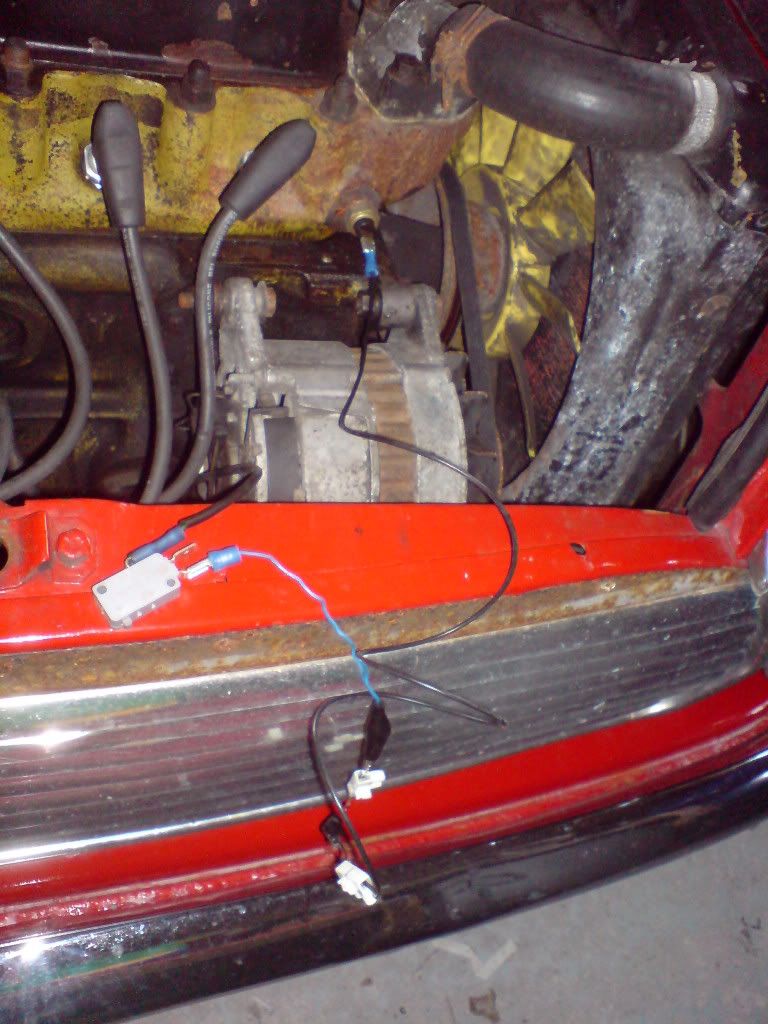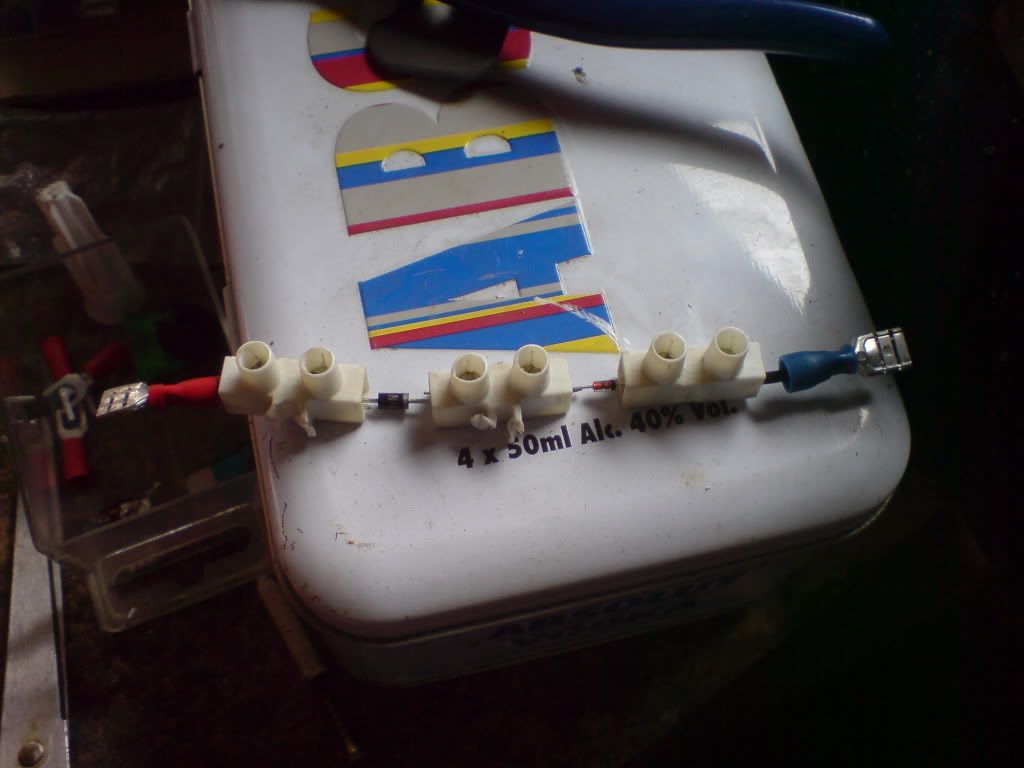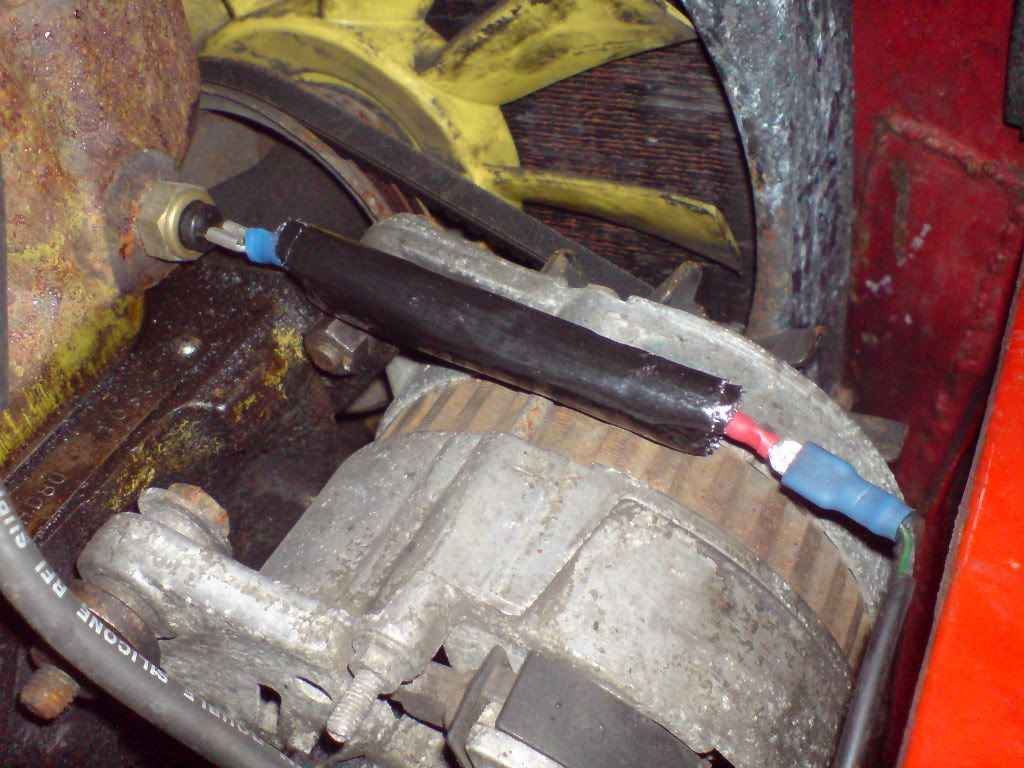
Odd Problem After This Mod "how To Fix Your Nippon S' Temp And Fuel Gauge"
#1

Posted 02 April 2012 - 06:54 PM
link here... http://www.theminifo...ulator maplins
After new senders and no joy I did this mod and now my guages are a bit too good!!
The fuel guage is a bit too keen to stay high when full its off the guage until its tank is 1/2 full and then it works kinda like it should, so thats ok I can live with that... but the temp guage climbs into the red as soon as the car gets to 88-90 and thats a good operating temp but the guage says its red to dead!
I've checked the sender and its fine on the resistance. warming up lowers the resistance so normal tickover running temp eventually gives me about 80 something ohms, so this seems ok and it is a new sender too.
Is it worth adding a resister to the sender so bring the guage back down to the middle as I know the engine ain't overheating.
I'm thinking the now constant 10v would be stronger than the old 10v output because the old style reg would average less than 10 due to it's switching on and off all the time.
Maybe the new regulator should give 9.5v instead of 10v so it all works more like it used too?
the guages work fine, senders too, and the maplins regulator is a steady 10v.
what do you think folks?
can i get away with a resister to drop the voltage a lil bit so I still have guage to move up into if I ever overheat? y'know so my temp guage shows mid line when normal and only gets to the red if its seriously hothothot!
#2

Posted 02 April 2012 - 06:56 PM
and the mod was done as described and checked lots with multimeter,,,
#3

Posted 03 April 2012 - 06:05 AM
#4

Posted 03 April 2012 - 06:37 AM
#5

Posted 03 April 2012 - 11:33 AM
However, by all means experiment if you want, you may have some better luck than i, a small resistor may do the job, best thing i can think for you to try (as im no longer in a position to try anymore) is make sure you have a full tank, play around with a variable resistor until your needle just reaches the full mark, empty out half the tank and see what happens, if you have luck repost your findings please so i could make amendments to my original thread
#6

Posted 03 April 2012 - 07:13 PM
I'm about to change my bulbs to leds while I have the guages out so I'm going to try a resister on the maplin chips 10v output to drop the voltage to guages to 9v when I do, (this weekend hopefully).
I'll be sure to post the results of my multimeter!
:)
#7

Posted 03 April 2012 - 07:25 PM
#8

Posted 03 April 2012 - 09:12 PM
If creating a voltage drop adds to the problem the my next step is to try a maplin chip that give more voltage like say 11v. but I think this is unlikely as the guages are already getting too much of whatever the problem is.
The guages work on bimatalic strips that move as they heat up (I think).
The guages are getting either too much voltage or too much current as one of these is deflecting the real reading significantly.
So the problem might even be that they like a sweet 10v but need less current?
(based on the old regulator design being intermitent on its output)
The chip in the mod post gives 10v at 1000ma or 1amp so maybe some tinkering is the best way to find that sweet spot!
I'll try a voltage drop first as this should also reduce the current slightly at the same time.
once we experiment together we could find an average setup that works and then find the perfect regulator chip!!
If you've done this mod PLEASE experiment and tell us your results so we can find the perfect component!
#9

Posted 04 April 2012 - 12:17 PM
Stormin' put a lot of effort into his work but if I remember correctly he used all the same wire colors so you have to pay very close attention to "what goes where" when looking at his article. Make sure that you actually have the chip earthed, 12V power going in on its input leg, and that its 10V output leg is connected to the gauge power trace.
If the chip is wired incorrectly it will do 2 things. It will typically get VERY hot and you will have 12V where you are NOT expecting it. If the voltage is too high... your gauges will read high just like you are reporting. Also remember that you have to put the shim/insulation between the old Nippon-Seiki voltage stabilizer points.
#10

Posted 05 April 2012 - 11:34 AM
#11

Posted 05 April 2012 - 12:14 PM
After that, you will need to double-check Stormin's connections on the back of the gauge cluster. You will need to confirm that the trace he used for earth is indeed earth, that the power in does have switched 12V on it. Also make sure the old NS stabilizer had the insulating material between its points. I cannot offer any hands-on guidance for the FAQ and wiring of the chip to the NS clusters. Cars with the NS clusters never made it over here except when imported one at a time... typically with questionable paperwork.
#12

Posted 05 April 2012 - 06:28 PM
I'll be back with tales of my tinkering asap :)
#13

Posted 07 April 2012 - 03:34 PM
This means that the guages were brighter with the origional incandecent bulbs!
Right then it's time to open things up and sort em out...
#14

Posted 07 April 2012 - 03:39 PM
Opened up the instrument cluster to check that the old voltage regulator was still isolated with a bit of tape as described in the origonal mod. Yep all ok there , and the new voltage regulator chip was wired correctly and still giving out a constant 10v so thats all good :)
Voltage at the temp sender is 9.86v
Checked the resistance of the temp sender as the car warmed up and this was within expected norms and the temp guage slowly climed its way up until at normal running engine temp the guage was steady just under the red bit.
When I drive my mini hard up a few hills the temp guage climbs a little so that it's just above the red bit.
I know the engine isn't overheating so I crimp up some crocodile clips so I can insert different resistors in line with the sender wire.
And then one by one I test every kind of resistor I can get my hands on to see if I can change the deflection of the needle.

Lots of wasted time later I find that not even one of them lets through enough current to let the guage even function! now what!?
Then I remember that diodes also create a voltage drop and I try a few of those instead.....and results!!


The comination of two diodes in the above pictures drop the voltage down to 7.61v at the sender and this puts the temp guage back where it should be on the center line :)
Time to tidy up the diodes a bit so some choccy block, wire, spade conectors, then wrap in bubble wrap and cover in bodge tape and I have a component that only flexes by the wires at each end and is protected from engine heat and should be ok in the rain.
And should it fail I can just plug the wire back on the sender just like it used to be :)


Take my mini out for a drive and when the engines working hard the temp guage climbs a little bit further up but not by too much.
wahey!

P.S. the fuel guage problem needs more thought...It's showing more than full on the guage when it's almost full in the tank;
and when this guage hit's the red I can see that there's still about a litre in the bottom of the tank. wierd but I can live with that ;)
If I do this mod ever again I'm still going with the sugested voltage reg from maplins as changing to a lower voltage
(say 8v instead of 10v) would just make the dash lights even more dim!
#15

Posted 07 April 2012 - 03:50 PM
The diodes you added may prevent a high reading when your engine is working hard, but it should also make the "normal" readings lower.
As for the lighting, again, I need to see one of these clusters up-close to figure out what is going on. I would be very surprised to learn that the original factory wiring would have powered the illumination off the 10V stabilizer output.
1 user(s) are reading this topic
0 members, 1 guests, 0 anonymous users

















